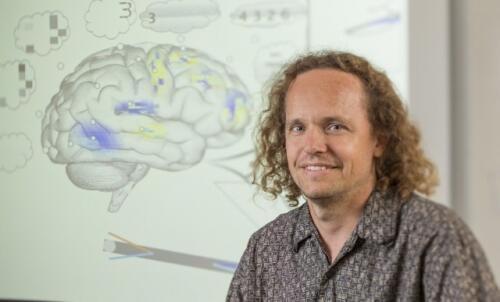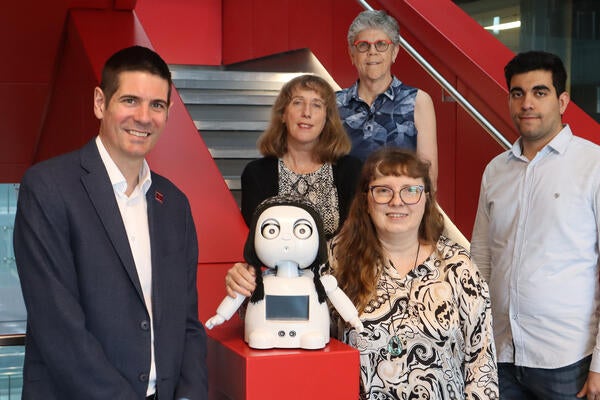
Waterloo researchers create world's largest functioning model of the brain
A team of researchers from the University of Waterloo has built the world's largest simulation of a functioning brain

A team of researchers from the University of Waterloo has built the world's largest simulation of a functioning brain
By Media RelationsWATERLOO, Ont. (Thursday, Nov. 29, 2012) – A team of researchers from the University of Waterloo has built the world's largest simulation of a functioning brain. It can help scientists understand how the complex activity of the brain gives rise to the complex behaviour exhibited by animals, including humans.
The model is called Spaun, which stands for Semantic Pointer Architecture Unified Network. It consists of 2.5 million simulated neurons. The model captures biological details of each neuron, including which neurotransmitters are used, how voltages are generated in the cell, and how they communicate. Spaun uses this network of neurons to process visual images in order to control an arm that draws Spaun's answers to perceptual, cognitive and motor tasks. The research team's findings appear in this week's issue of the journal Science.
"This is the first model that begins to get at how our brains can perform a wide variety of tasks in a flexible manner—how the brain coordinates the flow of information between different areas to exhibit complex behaviour," said Professor Chris Eliasmith, Director of the Centre for Theoretical Neuroscience at Waterloo. He is Canada Research Chair in Theoretical Neuroscience, and professor in Waterloo's Department of Philosophy and Department of Systems Design Engineering.
Unlike other large brain models, Spaun can perform several tasks. Researchers can show patterns of digits and letters the model's eye, which it then processes, causing it to write its responses to any of eight tasks. And, just like the human brain, it can shift from task to task, recognizing an object one moment and memorizing a list of numbers the next. Because of its biological underpinnings, Spaun can also be used to understand how changes to the brain affect changes to behaviour.
"In related work, we have shown how the loss of neurons with aging leads to decreased performance on cognitive tests," said Eliasmith. "More generally, we can test our hypotheses about how the brain works, resulting in a better understanding of the effects of drugs or damage to the brain.”
In addition, the model provides new insights into the sorts of algorithms that might be useful for improving machine intelligence. For instance, it suggests new methods for controlling the flow of information through a large system attempting to solve challenging cognitive tasks.
Professor Eliasmith has written a book on the research. How To Build A Brain will be on shelves this winter. Videos on the project are at http://nengo.ca/build-a-brain/spaunvideos.
In just half a century, the University of Waterloo, located at the heart of Canada's technology hub, has become one of Canada's leading comprehensive universities with 35,000 full- and part-time students in undergraduate and graduate programs. Waterloo, as home to the world's largest post-secondary co-operative education program, embraces its connections to the world and encourages enterprising partnerships in learning, research and discovery. In the next decade, the university is committed to building a better future for Canada and the world by championing innovation and collaboration to create solutions relevant to the needs of today and tomorrow. For more information about Waterloo, visit www.uwaterloo.ca.


Read more
A social robot could help children and families stick to a treatment for 'lazy eye'

Read more
The Government of Canada announces funding for discovery and applied research in engineering, natural sciences, health and social sciences

Read more
Meet the 13 exceptional students representing Waterloo’s newest grads
The University of Waterloo acknowledges that much of our work takes place on the traditional territory of the Neutral, Anishinaabeg, and Haudenosaunee peoples. Our main campus is situated on the Haldimand Tract, the land granted to the Six Nations that includes six miles on each side of the Grand River. Our active work toward reconciliation takes place across our campuses through research, learning, teaching, and community building, and is co-ordinated within the Office of Indigenous Relations.